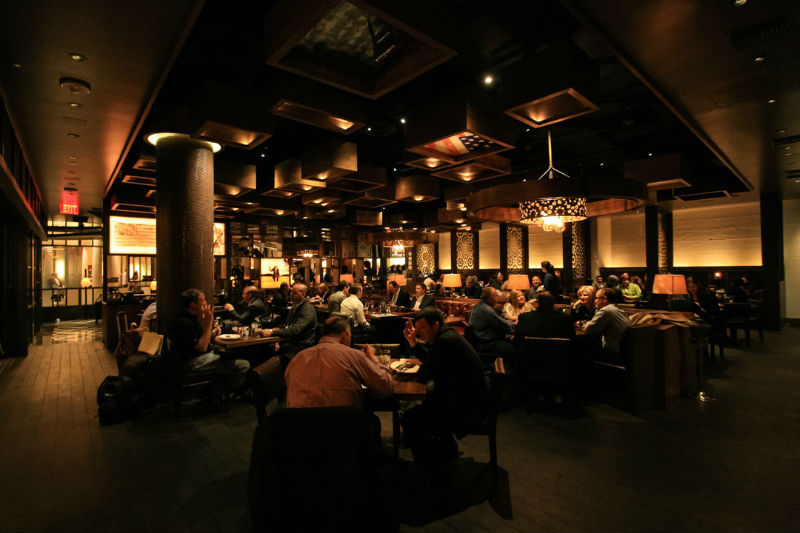Experiment: What does restaurant lighting affect?

In our blog, we already talked about how restaurants introduce work automation systems (for example, Jowi ), use design to create menus , gossip information about visitors and reduce noise. But there is one more important aspect influencing the final success of the establishment - lighting.
Today we will talk about how light affects the way people eat, and consider an experiment on the subject.
')
Rules of light in the restaurant
Historically, in the restaurant business, great attention has been paid to creating the right atmosphere - most often people come to places to not only eat, but also to socialize. That is why restaurants are working to reduce the noise level - it is comfortable to communicate, in a situation where the interlocutors have to shout, it is simply impossible.
Well-chosen lighting can create a good mood for the visitors of the establishment. At the same time it is important that the light corresponds to the time of the day at which the meal is taking place, and to the type of meal itself. Here are some rules on this:
- For example, during breakfast there should be a lot of light so that guests can easily read their morning newspapers.
- At lunchtime, fast-food restaurants set moderate, not-too-dark lighting — it helps customers stay awake.
- During dinner, people want to relax and sit longer, so the level of lighting should be lower than at other times of the day.
What does the lighting affect
There are studies by psychologists who claim that bright light affects the nervous system in such a way that people begin to eat faster. Also, in bright light, restaurant visitors have less control over how much they have already eaten, says University Professor Illinois Brian Wansink. In order to avoid overeating in a brightly lit restaurant, the expert advises to constantly mentally remind yourself to eat more slowly, and to order less food - so it will be possible to get enough faster not to eat again.
These statements are confirmed by experiments. A few years ago, researchers at Cornell University in the United States found out how the general atmosphere of an institution affects the consumption of food by its visitors. During the experiment, one part of the fast-food establishment with energetic music and bright lighting was redone - the light was reduced there, and quiet jazz played in the background. Visitors randomly seated in two parts of the restaurant.

The researchers assumed that visitors to the “quiet” part of the establishment would eat more, since a more pleasant atmosphere would contribute to a long “get-together”. As a result, the hypothesis about the length of stay was confirmed, but it turned out that in a calm atmosphere, people actually eat less. Visitors preferred to communicate, rather than order additional dishes.
At the same time, in the survey that followed, guests who were accommodated in a quieter and darker area gave the dishes higher marks.
As a result, visitors to the fast food zone consumed more food (on average, 175 calories more ).
When people are not distracted by bright elements of room design, light or loud music, they will not mindlessly absorb food, but will pay more attention to communication.
Accordingly, institutions that want to accelerate the "turnover" of customers and make them order more, they use a brighter light. At the same time, those institutions that are more focused on receiving positive reviews and high ratings from customers, establish a more relaxed lighting and use quiet pleasant music.
Source: https://habr.com/ru/post/368127/
All Articles